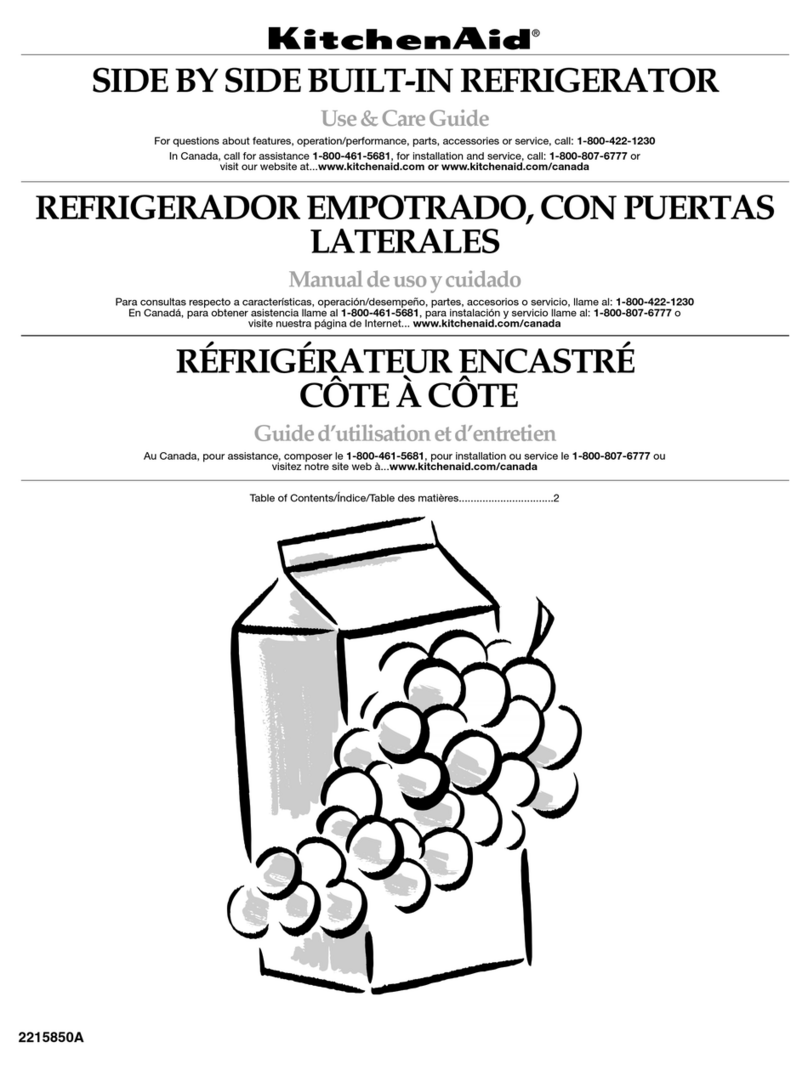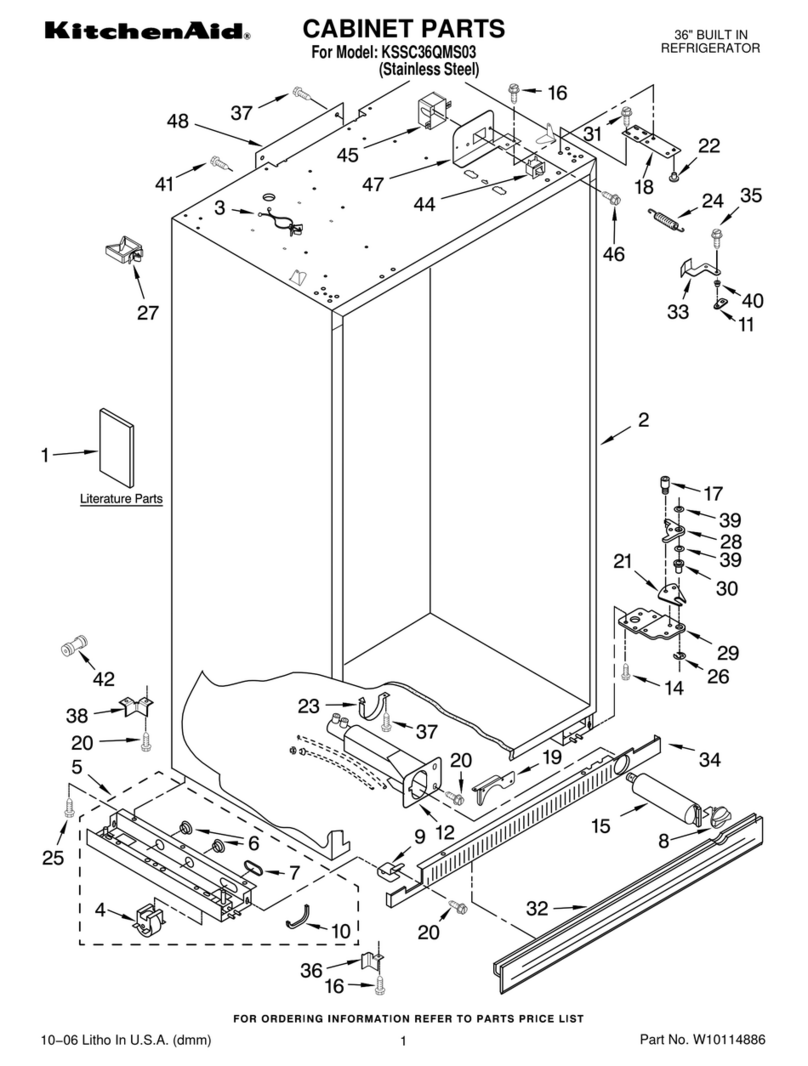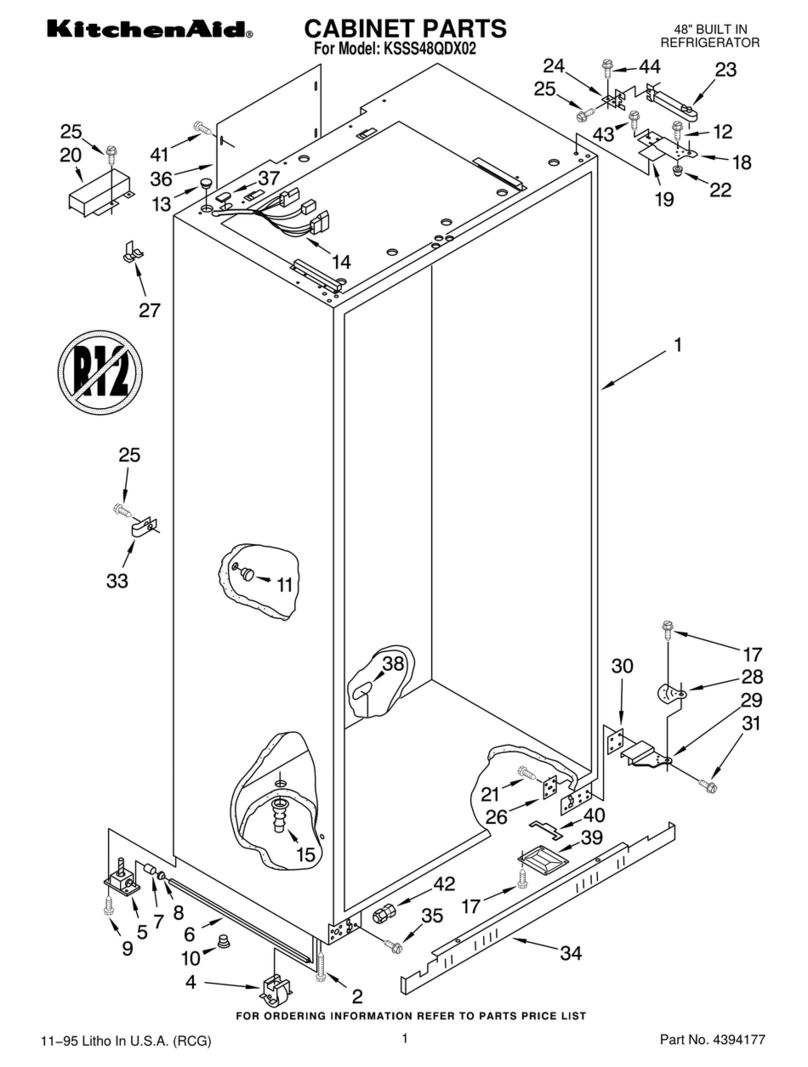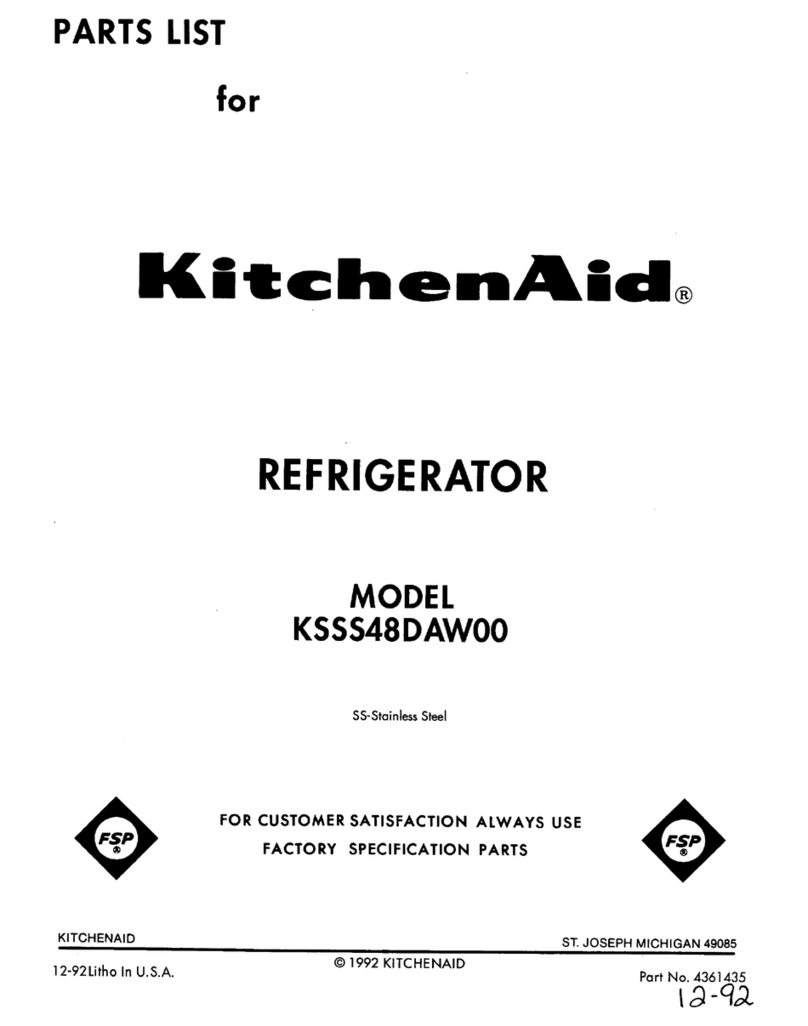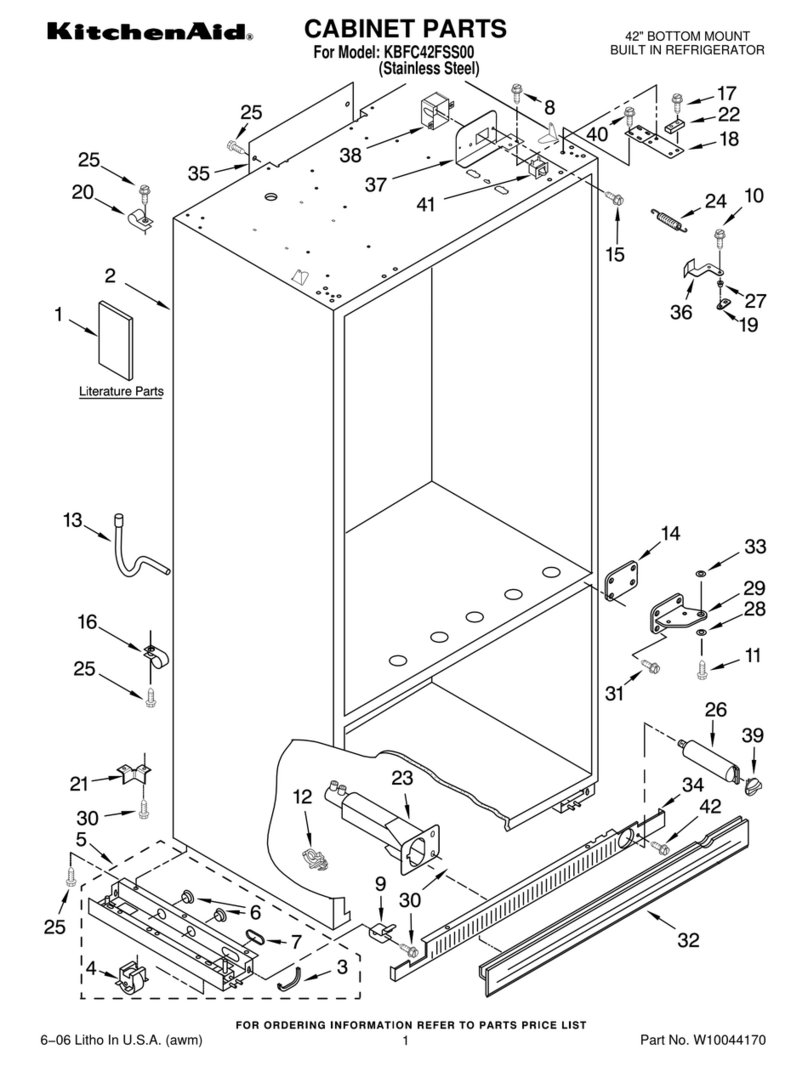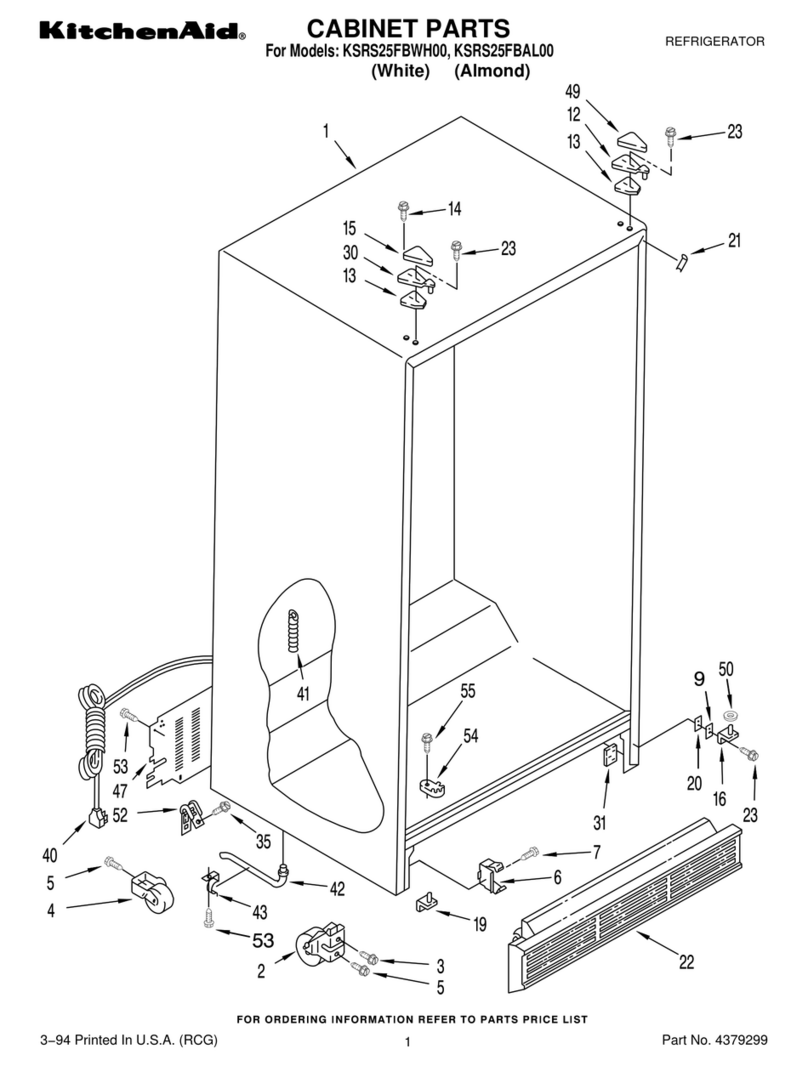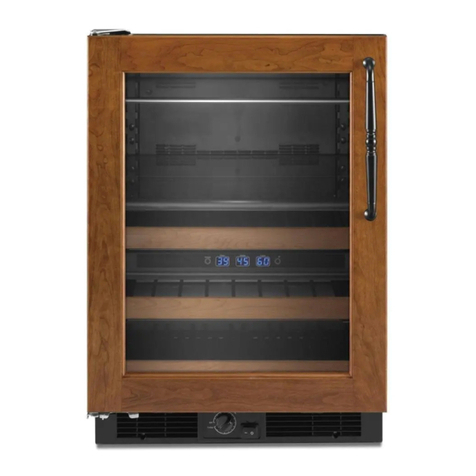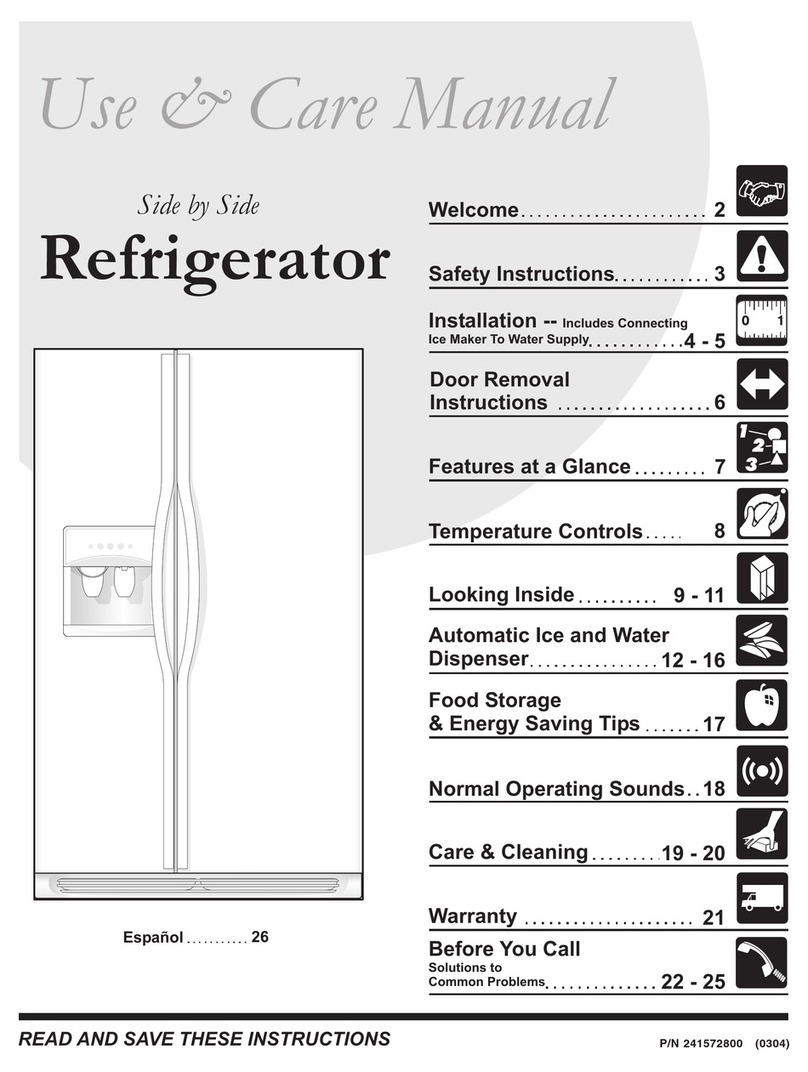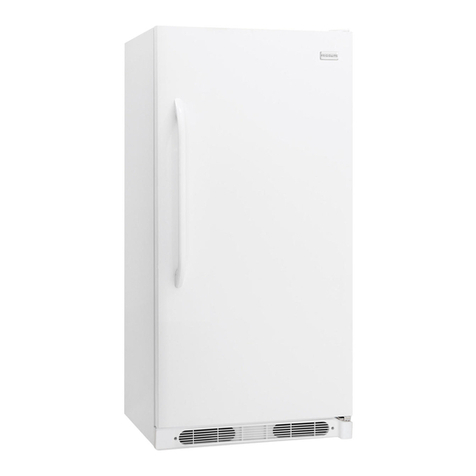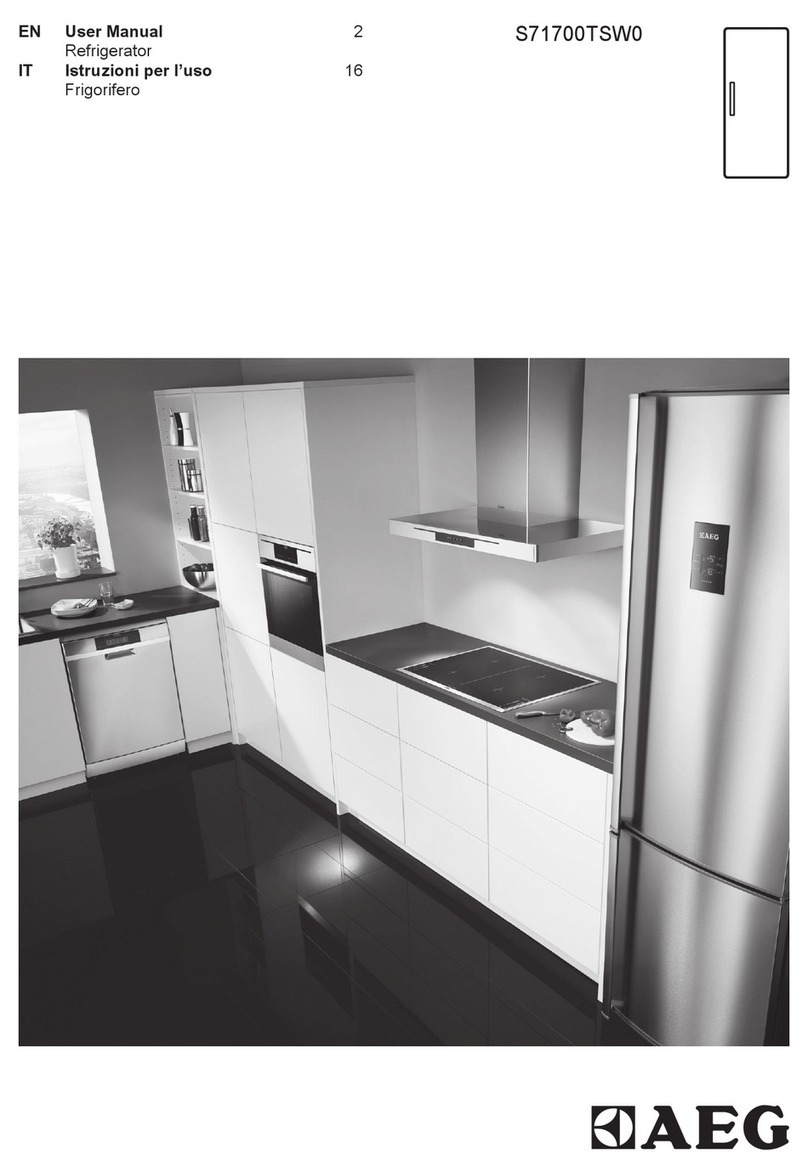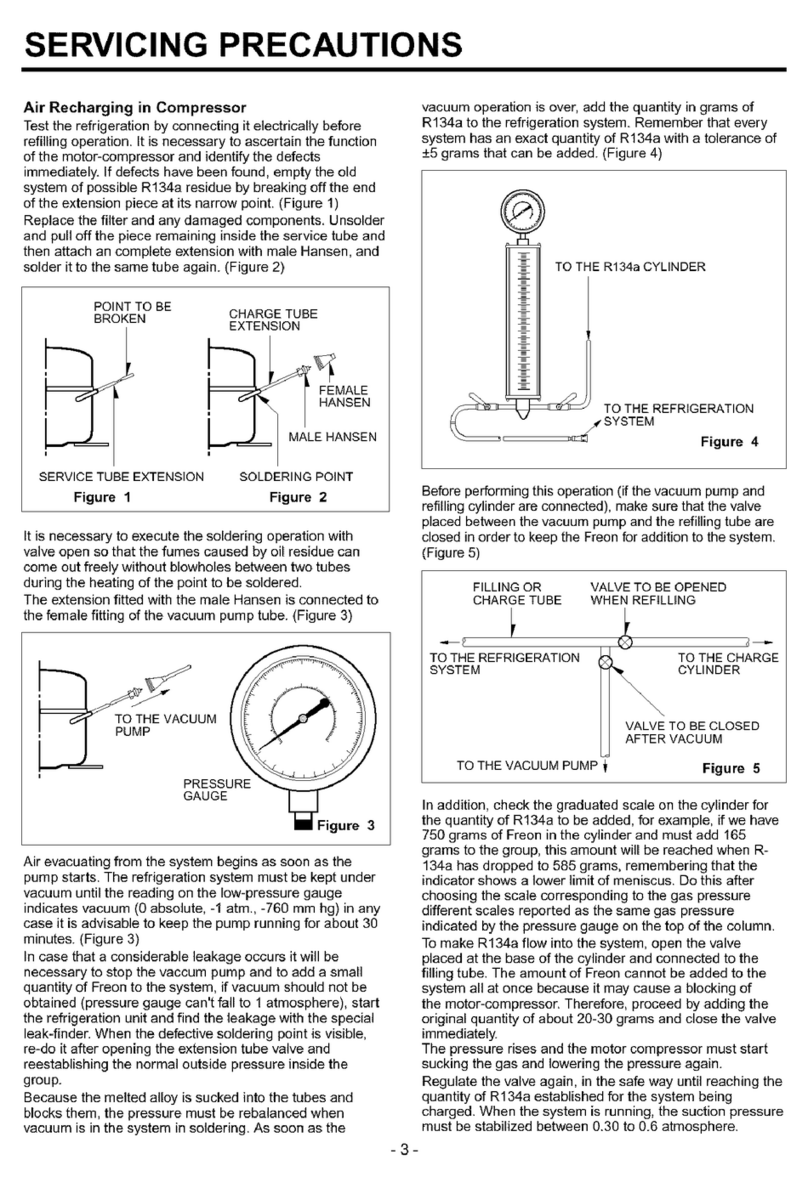Electrical Requirements
Electrical Shock Hazard
Electrical ground is required on
this appliance.
If cold water pipe is interrupted
by plastic, non-metallic gaskets
or other insulating materials, Do
Not use for grounding.
Do Not ground to gas pipe.
1Do Not modify the power supply
cord plug. If it does not fit the
outlet, have a proper outlet
installed by a qualified
electrician.
1Do Not have a fuse in the neutral
or grounding circuit. A fuse in
the neutral or grounding circuit
could result in an electrical shock.
1Do Not use an extension cord
with this appliance.
1Check with a qualified electrician
if you are in doubt as to whether
the appliance is properly
grounded.
t is the customer’s responsibility:
1To contact a qualified electrical
installer.
1To assure that the electrical
installation is adequate and in
conformance with the National
Electrical Code, ANWNFPA 70 -
latest edition** or Canadian
Electrical Code, C22.1-1982 and
C22.2 No. 01982 (or latest
edition)*, and all local codes and
ordinances.
Failure to follow these instructions
could result in serious injury or
death.
If codes permit and a separate
grounding wire is used, it is
recommended that a qualified
electrician determine that the
grounding path is adequate.
Page 7Page 7
retainerretainer
A 120-volt, 60-Hz, AC-only, 15- or 20-
ampere, fused, electrical supply is
required. A time-delay fuse or circuit
breaker is recommended. It is
recommended that a separate circuit
serving only this appliance be provided.
This appliance is equipped with a
power supply cord having a 3-prong
grounding plug. To minimize possible
shock hazard, the cord must be
plugged into a mating 3-prong,
grounding-type wall receptacle,
grounded in accordance with the
National Electrical Code, ANSVNFPA
70 - latest edition’* or Canadian
Electrical Code, C22.1-1982 and C22.2
No. 01982 (or latest edition)*, and all
local codes and ordinances.
Copies of the standard listed may
be obtained from:
*Canadian Standard Association
178 Rexdale Boulevard
Rexdale (Toronto), Ontario M9W
lR3
** National Fire Protection Association
Batterymarch Park
Quincy, Massachusetts 02269
Water Supply Requirements
Water line to refrigerator must provide
15-l 00 psi (103-690 kPa) water pressure.
To calculate length of l/4” (6 mm)
O.D. copper tubing needed:
1. Locate a vertical l/2” (1.2 cm) to l-1 /4”
(3.2 cm) COLD water line near refrigerator
area. A horizontal COLD water line can be
used if directions in Step 4 are carefully
followed.
2. Measure distance from cold water line
to refrigerator area. Add 24” (61 cm) to
this measurement.
To rough in water line:
3. Turn OFF main water supply. Turn ON
nearest faucet long enough to clear line of
water.
4. Vertical cold water line: Use
grounded electric drill or hand drill to
drill 3/l 6” (4.5 mm) hole in an easily
accessible location in water line.
Horizontal cold water line: Use
grounded electric drill or hand drill to
drill 3/l 6” (4.5 mm) hole in the top of
the water line. This will keep sediment
from collecting in valve.
5. Position washer over hole in water line.
Turn saddle valve handle clockwise to
expose piercinq lance a
Electrical Shock Hazard
Some water may remain in line.
Electric drill must be grounded to
prevent severe or lethal shock if water
is in line and enters drill during use.
Failure to do so may result in personal
injury or death.
Product/Property Damage
1Use only l/4” (6 mm) copper
tubing for water line.
l Do Not install copper tubing in
area where temperatures drop
below 32°F (WC).
l Before attaching copper tubing to
refrigerator, flush at least 2 quarts
(1.9 L) of water through the
copper tubing and into a bucket
to get rid of any particles in the
water line.
l Do Not overtighten clamp or
sleeve. This will crush copper
tubing.
l Check for leaks around saddle
valve.
Failure to follow these instructions
may result in water damage to
property or product damage.
saddle valve bracket against
water line. Turn saddle valve
handle clockwise until
piercing lance enters hole
in water line and is
firmly seated. The
saddle valve is not in
position. Tighten pat
Evenly and firmly tighten bracket screws
so washer will make a water-tight
connection. Do Not over-tighten screws;
copper tubing could be crushed.
6. Check that both ends of copper tubing
are cut square. Slide compression nut and
sleeve onto copper tubing. Insert end of
copper tubing completely into valve outlet.
Tighten compression nut to outlet with
adjustable wrench. Do Not overtighten.
7. Turn on main water supply. Check for
leaks. Turn saddle valve handle
counterclockwise and run water through
copper tubing and into a bucket. Turn
handle
clockwise -
to shut -
saddle
valve comprc-‘-- -_- _---
\ /
nr ,I, hinr
off water sle&e
union
to copper tubing.
8. Route copper tubing to refrigerator area.
9. Slide compression nut and sleeve over
the water line. Connect union to
compression nut and sleeve and tighten.
Do Not overtighten.


